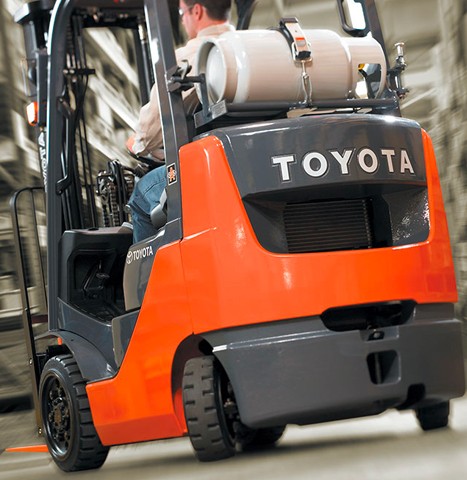Your forklift tires are a really important part of your forklift. Yes, you probably already knew that, but did you know that your tires can have a huge impact on your forklift operation? If your forklift tires are not up to snuff, you may be looking at downtime, decreased productivity and less efficiency in your operations. At Madland Toyota-Lift, we have tire service professionals at three convenient locations to help you keep your forklift tires in the best possible shape.
Let's talk first about the kind of forklift tires available and how to determine which kind best suits your unique situation.
Are your forklift operations mainly carried out indoors? If so, you'll want cushion forklift tires which work well on smooth surfaces. Cushion forklift tires can do outdoor work on asphalt, but as a general rule, cushion forklift tires are for indoor applications.
Are your forklifts operations mainly outdoors with a variety of surfaces to cover? If so, pneumatic forklift tires are going to be your best bet. Pneumatic forklift tires are better for rough surfaces and have a higher ground clearance than cushion forklift tires.
When you decide on pneumatic forklift tires, you'll need to decide if you want air or solid rubber. Is your forklift operating in a place where there could be a lot of debris, such as nails and screws? Are you planning to use your forklift in lumber yard or on a construction site? If either of these is true, you'll probably want to consider solid rubber pneumatic forklift tires. The air pneumatic tires are the same as used on cars and are easily punctured, whereas solid rubber pneumatic tires cannot be punctured by nails, screws and other sharp objects.
Smooth or Traction Forklift Tires
Are your forklift operations mainly on dry surfaces or wet surfaces? The answer to that will help you decide if you want smooth or traction forklift tires. Smooth forklift tires work better on dry surfaces, while forklift tires with traction do better on wet surfaces. But be forewarned: You cannot use traction forklift tires on ramps with metal teeth. The teeth will damage the traction tread.
Keeping Track of Your Tires
Forklifts are comprised of many important components and the condition of your
forklift tires may not be uppermost in your mind. But consider this: Your forklift tires are carrying the entire weight of the forklift, plus whatever load the forklift is carrying. It puts the condition of your forklift tires into perspective. Besides avoiding the dreaded downtime, forklift tire degradation or failure may cause safety issues for your operators, as well as decreasing your fuel efficiency and putting an extra strain on the other components of your forklift.
When Is It Time To Service or Replace Your Forklift Tires
Different tire types show wear and tear in different ways. One good tip for all types of forklift tires is the two-inch rule: After two inches of tire height is gone, it's
probably time for a change. Other signs of forklift tire issues include chunking, cracking, tears, splits, balding, worn tread and flat spots.
At Madland Toyota-Lift, we have service professionals who are happy to help you with your
forklift tires at any of our three convenient locations. We also provide
on-site tire repair and
replacement, including tire pressing. Don't wait until you are facing decreased productivity and efficiency by experiencing a tire failure.
Contact us today!



